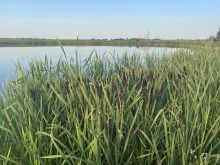You could think of the Agriculture Canada centre of excellence in Saskatoon as the Manhattan Project for canola: The brightest and best minds brought together in one creative place for one purpose.
In the Manhattan Project, scientists split the atom.
In Saskatoon, they are expanding the knowledge of canola.
The goal is to improve existing canola varieties and produce a new generation of oilseed crops for the 21st century, said Ashley O’Sullivan, Agriculture Canada research centre director.
Although Saskatoon has been integral to the development of canola from the beginning, its status will take a giant step forward when the $38 million enlargement and refurbishment of the Agriculture Canada research centre is complete in December.
Read Also

Europe holds promise for Canadian lentils
Pulse Canada is trying to help boost lentil consumption in Europe, which is already the fourth largest market.
Working with the University of Saskatchewan’s agricultural expertise, the National Research Centre’s Plant Biotechnology Institute and private companies, Agriculture Canada’s canola research project will be impressive.
“What we have in oilseeds is second to none in the world,” O’Sullivan said.
In 1995 the federal government reorganized Agriculture Canada, naming Saskatoon its centre for oilseed research.
Outline priorities
O’Sullivan said the first step was to gather leading oilseed scientists to identify opportunities and research priorities.
The plan was approved by farmers and industry associations.
It has several research groups.
The focus of the first is basic science – developing a more complete understanding of the genetic structure of the plant.
“With the molecular biology group, we have the capability to identify genes of importance, traits say for oil content or quality or insect resistance or whatever,” he said.
The second group consists of plant breeders who take these traits and put them into what researchers call elite germ plasm.
“It might be a plant line that has high oil content or has a yellow seed color or resistance to a major insect, but it doesn’t have all the agronomic characteristics that would make it acceptable to be a variety,” O’Sullivan said. The germ plasm is then tendered to private companies that breed it into acceptable varieties.
A third research group discovers new uses for prairie crops. Its work on oats fractionation has identified several components that are already being processed and sold to cosmetic and personal grooming product manufacturers.
The same thing will be done with canola.
O’Sullivan said this group “closed the loop,” in that once it identifies plant components of commercial value, the molecular biology group can identify what genes control production of the components and start the process to modify the plant to produce more.
To get all this done, the existing team of scientists in Saskatoon has been bolstered by researchers transferred from Agriculture Canada in Ottawa and Lethbridge as well as people hired from outside Agriculture Canada.
“When designing a team from the ground up, you want a mix of young, bright minds and older bright minds who have a little more research experience and an understanding of the big picture,” O’Sullivan said.
World-wide recognition
Hiring an internationally recognized researcher was important, he added.
“It keeps you in the international picture. It makes you attractive to companies and organizations around the world who will send scientists to work with you so you have the best minds in the world.”
They found Derek Lydiate, a molecular geneticist at Britain’s top public plant research facility.
He arrived in mid-August and will bring with him several post doctoral researchers and students who have been working with him on brassica genome analysis and marker assisted breeding.
Although existing oilseeds such as Argentine and Polish canola will benefit from the research, work will also be directed at developing the next generation of oilseed and protein plants for the Prairies, O’Sullivan said.
These include a canola quality juncea or Indian mustard, expected to be licenced and in farmers’ hands by 2000.
Another plant in early development is sinapis alba, a white mustard. The plant has growth habits and pests different from canola and will offer farmers the opportunity to use oilseeds in their rotations more often without building up disease and insect problems.
“We are looking at two streams. One would be a canola look alike with high oil and low protein,” he said.
“The second stream would be similar to soybean where you have a high protein and a low oil. It would be equivalent to growing a soybean on the Prairies.”














